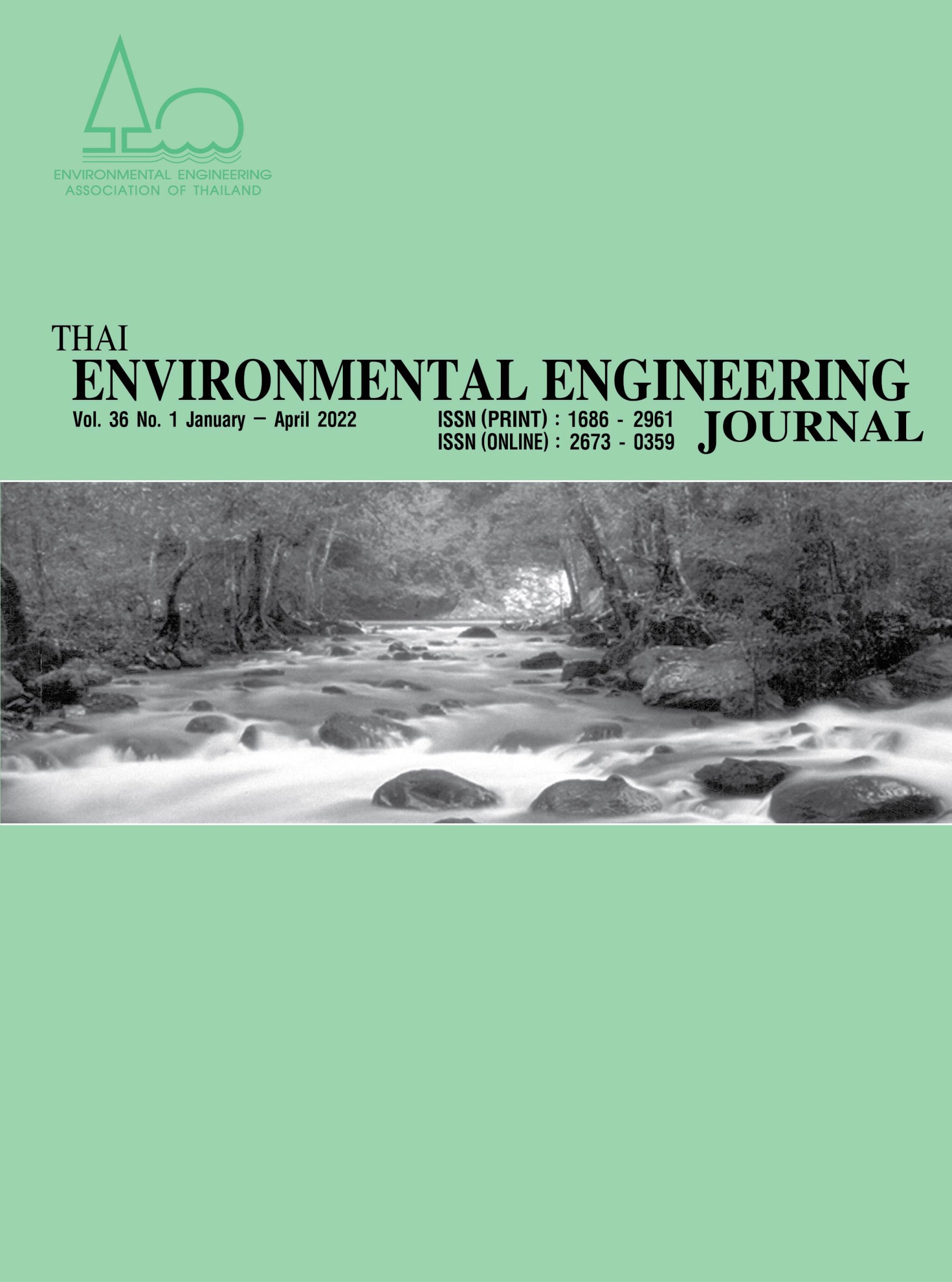The Methodology to Evaluate Food Waste Generation with Existing Data in Thailand
Main Article Content
Abstract
According to the Sustainable Development Goal 12.3, there is a target to reduce global food loss and waste by 50 percent, by 2030. Currently, Thailand does not have a food waste database or food waste index reports that employ highly accurate methods of measurement. So, tackling the amount of food waste generation is a top priority and challenge in achieving the SDG target. This research aims to present a method that can be adapted to report the amounts of food waste based on available data constraints and a systematic review of the literature, in comparison with the UNEP food waste index report. Due to the limited availability of food waste data in Thailand, especially at household, food service, and retail levels, this study uses level 1 modeling to estimate food waste generation occurring at the national level. These data are based on municipal solid waste (MSW) volumes and organic waste composition. As reported by the Pollution Control Department, organic waste, accounting for 63.57 percent total of garbage, was collected by municipalities across the country. The result showed that the level 1 food waste index of Thailand was 167 kg/capita/year, a value lower than that reported by UNEP. The UNEP Food Waste Index Report 2021 provides a household food waste measure in Thailand of 79 kg/capita/year. The limitation of the estimated calculation of the level 1 food waste index is that the total amount of food waste cannot be classified by sector (households, food service, and retail), material type including edible part (human consumption), and inedible parts (bones, rinds, etc.), and the destinations. The level 2 and level 3 food waste indices both consist of the quantification and qualification of waste by sector, material type, and destinations. On the other hand, the quantification methodology of measurement should be combined with methods that gather more comprehensive information, up to the level of accuracy that includes access to the physical food waste being quantified. The results from this study led to a recommendation to define and select the appropriate methodology of measurement for food waste quantification and disaggregation depending on the main purpose, specific conditions, the technology available. These existing resources are key to tracking and monitoring progress towards the achievement of the food waste reduction targets.
Article Details
References
FAO. 2011. Global food losses and food waste -extent, causes, and prevention. Rome.
United Nations Environment Programme. 2021. Food Waste Index Report 2021. Nairobi.
FAO. 2013. Food wastage footprint & Climate Change. Available at: http://www.fao.org/nr/sustainability/food-loss-and-waste.
Pollution Control Department. 2012. Guidelines for the feasibility study and design municipal solid waste management system for department of local administration. Bangkok.
Department of Environment, Bangkok Metropolitan Administration (BMA). 2019. Bangkok state of environment 2017-2018. Bangkok.
Food Loss and Waste Protocol (FLW Protocol). 2016. Food Loss and Waste Accounting and Reporting Standard (FLW Standard) – Version 1.0. Available at: https://www.flwprotocol.org/
United Nations. 2022. Sustainable Development Goals (SDGs) SDG12. Available at: https://sdgs.un.org/goals/goal12
Pollution Control Department. 2021. Criteria and method for municipal solid waste composition at disposal site. Available at: https://www.pcd.go.th/wp-content/uploads/2021/09/pcdnew-2021-09-13_02-03-01_793141.pdf
Food Loss and Waste Protocol (FLW Protocol). 2016. Guidance on FLW quantification methods. Available at: https://flwprotocol.org/
United Nations Statistics Division (UNSTAT). 2021. SDG Indicators Metadata 12.3 version 5 Feb 2021. Available at: https://unstats.un.org/sdgs/metadata/
Corradoa, S., Caldeira, C., Eriksson, M., Hanssenc, O.J., Hauser, H., Holsteijn, F., Liuf, G., Ostergren, K., Parry, A., Secondi, L., Stenmarck, A., Sala, S. 2019. Food waste accounting methodologies: Challenges, opportunities, and further advancements. Global Food Security, Volume 20: 93-100.
Pollution Control Department. 2019. Thailand State of Pollution Report 2019. Bangkok.
Paiboon Jeamponk. 2012. The Study of Solid Waste Utility and Household Management at Suanluang Sub-District, Amphawa District, Samut Songkram Province. Bangkok: Suan Sunandha Rajabhat University.
Regional Environment Office 6, Phra Nakhon Si Ayutthaya provincial administration organization. 2021. The study municipal solid waste Separation Regional Environment Office 6 report. Nonthaburi.
Supadate Niyomthong. 2019. Environmental and safety evaluation on garbage management system of surin municipality. Master of Engineering thesis, Kasetsart University.
FAO. 2019. The State of Food and Agriculture 2019. Moving forward on food loss and waste reduction. Rome.
Adelodun, B., Kim, S.H., Choi, K. 2021. Assessment of food waste generation and composition among Korean households using novel sampling and statistical approaches. Waste Management 122: 71-80.
Elimelech, E., Ayalon, O., Ert, E. 2018. What gets measured gets managed: A new method of measuring household food waste. Waste Management 76: 68-81.
Chen Liu. 2016. Food consumption and food waste in Japan, Ecological Civilization, Sustainable Consumption: Insights for Social Governance, October 16‐17, 2016. Shanghai University, Shanghai.
Segrè A., Falasconi L., Politano A., Vittuari M. 2014. Background paper on the economics of food loss and waste (unedited working paper). Rome, FAO.
Ngoc-Bao Pham, Thu-Nga Do, Van-Quang Tran, Anh-Duc Trinh, Chen Liu and Caixia Mao. 2021. Food Waste in
Da Nang City of Vietnam: Trends, Challenges, and Perspectives toward Sustainable Resource Use. Sustainability 2021, 13, 7368.
National Statistical Office. 2019. Demography Population and Housing Branch. Available at: http://statbbi.nso.go.th/staticreport/page/sector/th/01.aspx
Zainal, D., Hassan, K.A. 2019. Factors Influencing Household Food Waste Behaviour in Malaysia. Int. J. Research in Business, Economics and Management 3(3): 56-71.
WRAP. 2007. Food Behaviour Consumer Research: Quantitative Phase. Retail Programme - Food Waste: Final Report. UK: WRAP.
Farr-Wharton, G., Foth, M., Choi, J.H. 2012. Colour Coding the Fridge to Reduce Food Waste. Proceedings of the 24th Australian Computer-Human Interaction Conference (OzCHI 2012), Association for Computing Machinery (ACM), Melbourne, Australia: 119-122.


